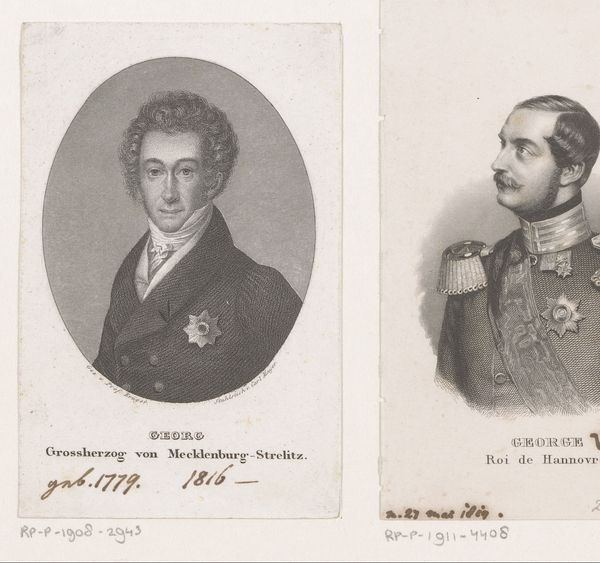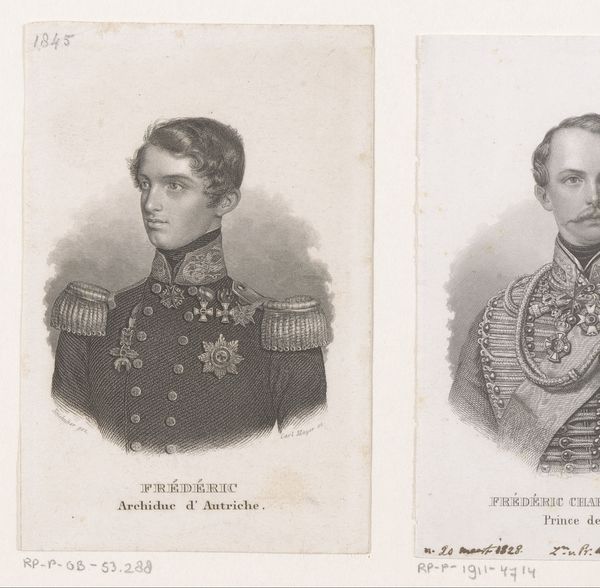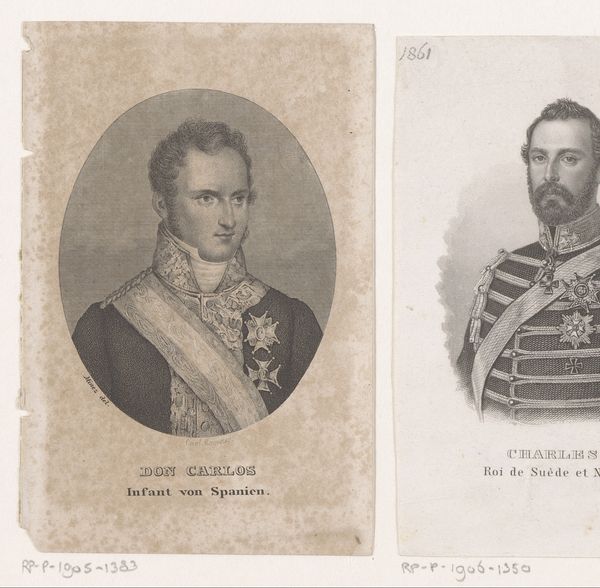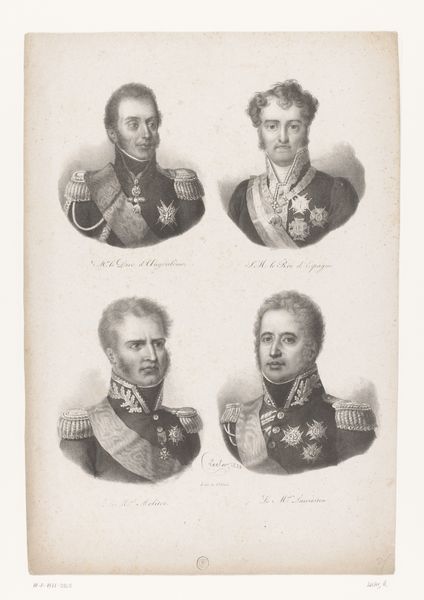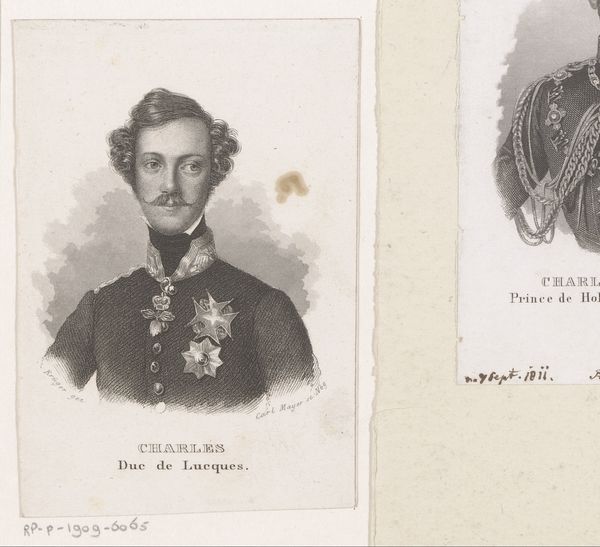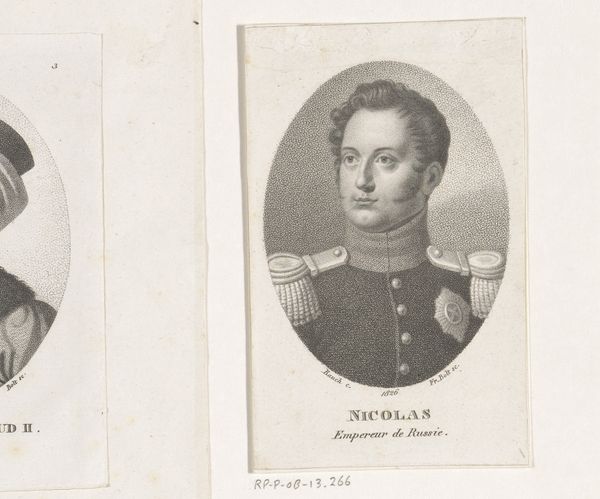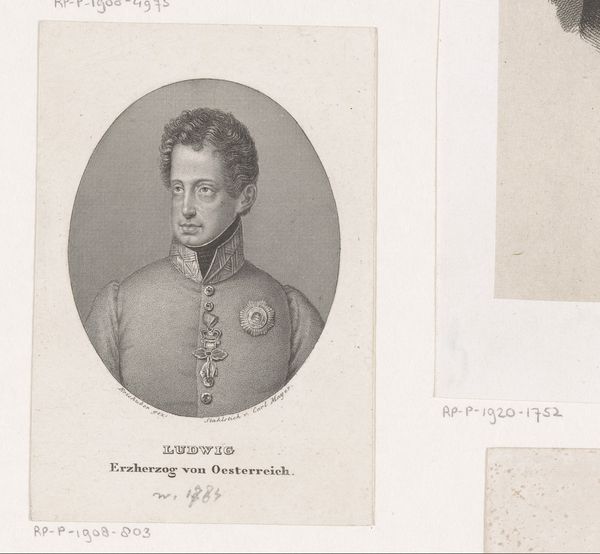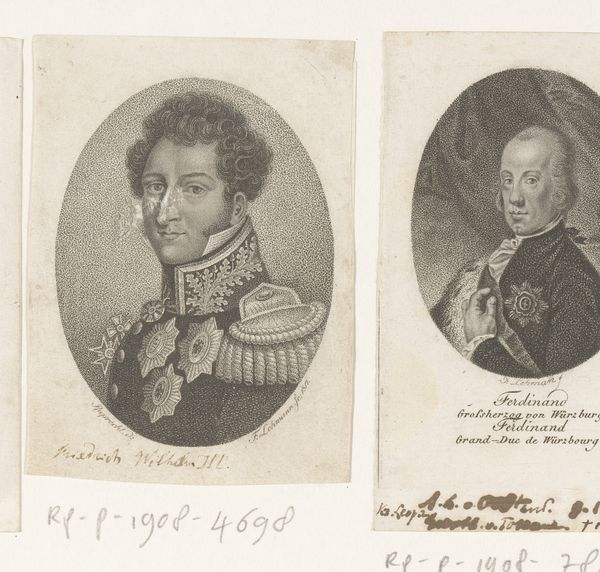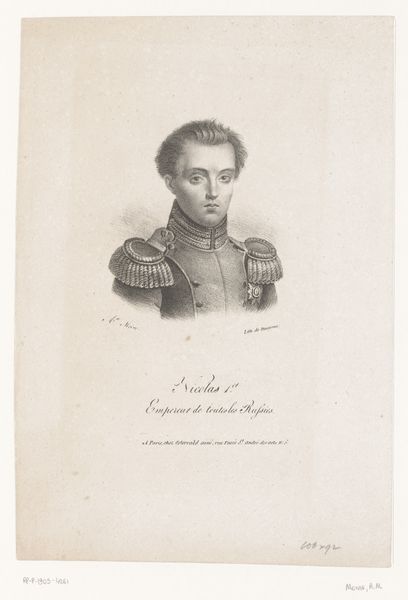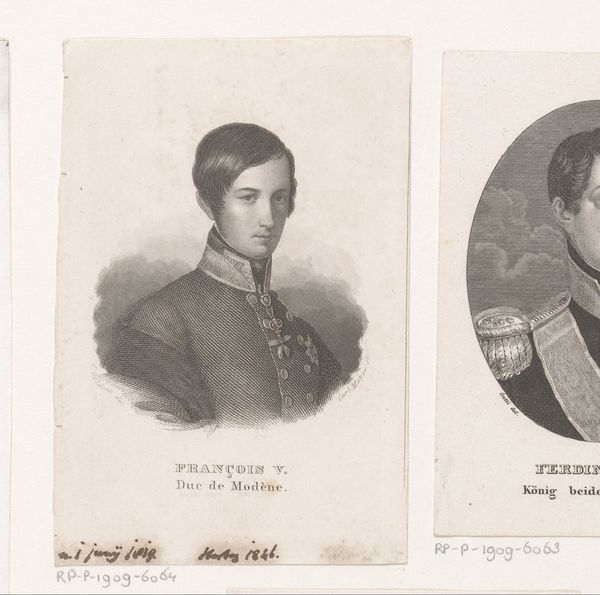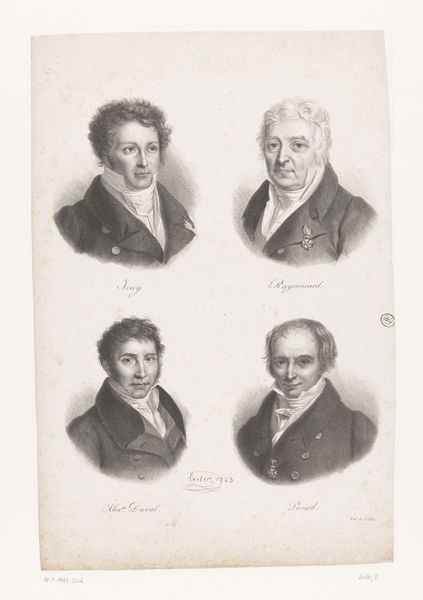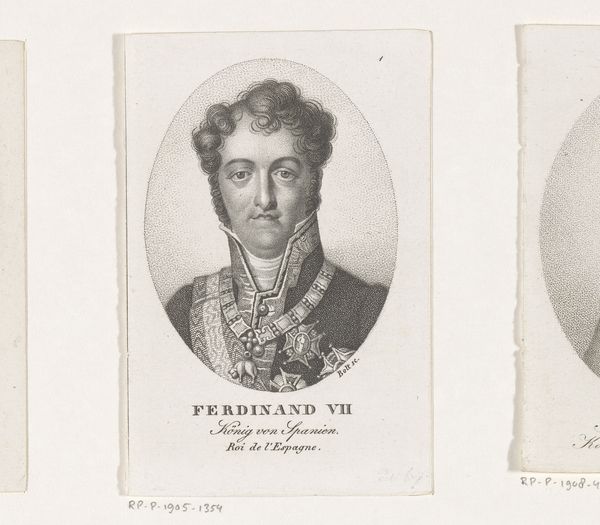
#
pencil drawn
#
imaginative character sketch
#
toned paper
#
light pencil work
#
pencil sketch
#
personal sketchbook
#
idea generation sketch
#
pencil drawing
#
sketchbook drawing
#
pencil work
Dimensions: height 106 mm, width 71 mm
Copyright: Rijks Museum: Open Domain
Editor: Here we have a pairing of pencil portraits from 1840, both titled "Portret van Karel Lodewijk Johan, aartshertog van Oostenrijk," by Carl Mayer. They depict two men of obvious noble bearing, but I find myself wondering, what stories do portraits of prominent figures tell us about their societies? Curator: An excellent question. In this context, these portraits reflect the rising trend of image circulation among the elite and the burgeoning print culture of 19th century Europe. They underscore how likenesses were used to construct and disseminate power, and influence public perception. Look closely at their attire, the precision of line...what message is being sent, do you think? Editor: That these figures are powerful and worthy of respect, absolutely. Their formal wear, the inclusion of decorations—it's all about projecting authority. Curator: Precisely. But consider also the role of institutions like the Rijksmuseum, where this artwork now resides. How does the act of displaying these images in a public museum impact our understanding of history and the portrayal of these figures? Editor: It feels like a tacit endorsement of a specific historical narrative, doesn't it? Displaying them reinforces the importance of this lineage. Is there a danger of uncritically celebrating these historical figures, obscuring less flattering realities? Curator: That's the key question. Museums inevitably shape how we see the past, and the decision to display, curate, and interpret an artwork involves complex socio-political considerations. How should museums acknowledge past imbalances of power and representation when exhibiting historical portraiture? Editor: Museums really do serve as filters. It's crucial they are open about that fact and actively promote diverse narratives alongside traditional views of history. I'll definitely look at these types of portraiture with more questions going forward! Curator: Agreed. And I learned that one can always question the message behind displayed artworks. Thanks for your great insights.
Comments
No comments
Be the first to comment and join the conversation on the ultimate creative platform.
